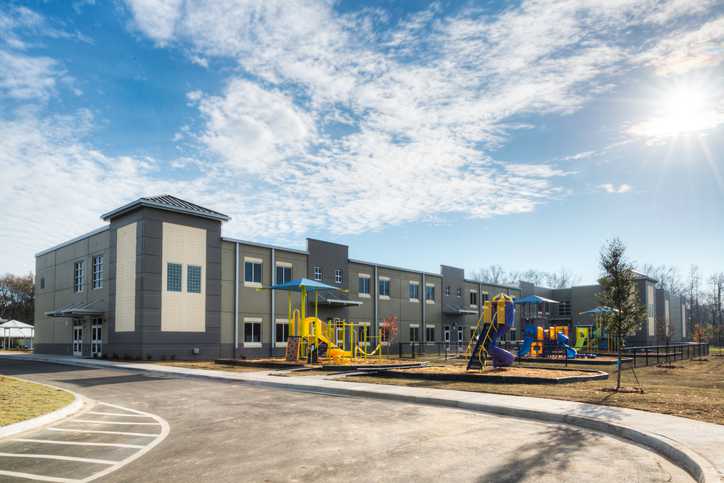How CTL Engineering Helps Schools Develop Storm Shelters and Improve Security
The recent update to the Ohio Building Code requires storm shelters in new K-12 school buildings and many other critical structures that submitted plans after November 1, 2017.
Section 423 of the Ohio Building Code now requires storm shelters compliant with ICC 500, the International Code Council’s standard for designing and constructing buildings strong enough to withstand the winds of tornadoes and hurricanes. The new rule applies to Ohio schools with 50 or more occupants.
All of Ohio lies within a geographic zone that’s prone to the most powerful tornadoes — so-called F5 twisters with winds of more than 200 mph. This risk obliges architects and engineers to prepare for the force of extreme winds and the effects of air pressure differentials. Storm shelter designs also must account for the weight of nearby structures and the potential for flying debris moving at high speeds.
The heavy-duty construction materials in doors, walls, ceilings, and floors create a host of new challenges. Exterior doors, for instance, may need to be so strongly reinforced that replacing them is essentially a demolition project.
Choosing the shelter location requires careful attention to detail. Sheltering in the basement is fine for homeowners when the tornado sirens blare, but underground shelters are less practical in schools because of the threat of water intrusion. Shelters can be placed at a distance from the school building, but that creates a hazard for people going outside in the middle of a storm.
Often, the most practical choice is to create a multiuse section of the building designated as a storm shelter. Large, open rooms used for art classes or band practice often prove suitable.
How CTL Engineering helps schools develop storm shelters
CTL Engineering helps school storm shelter development in two ways:
Geotechnical engineering. During a project’s design phase, our expert engineers evaluate soil conditions at the construction site to help architects and developers determine the proper foundation design for the storm shelter.
These shelters hold heavy loads because they must be strong enough to withstand the extreme winds of a tornado. They also must be built to survive falling and flying debris from nearby buildings, trees, automobiles, cellphone towers, and other objects that get swept up in a tornado. All these load factors require a thorough understanding of the soil conditions below the building’s foundation.
Construction inspection and testing. CTL can inspect storm shelter construction and test storm shelter materials in accordance with Chapter 17 of the Ohio Building Code, Special Inspections and Tests. Our inspectors are trained to understand the requirements of the referenced standards in the Code and to document whether those requirements are met during construction, or if a discrepancy has occurred. We also can test a wide range of potential storm shelter building materials including the soil or rock supporting the foundations, reinforced concrete or masonry, and structural steel.
Storm shelter construction requires hundreds of precise decisions to protect against both likely and unlikely threats. School district leaders need to make sure they partner with developers, architects, engineers, inspectors, and testers who have a proven track record in a diverse array of projects, locations, and environments.
Improving school security
School districts that are completing new construction may also want to add additional security measures to keep students and staff safe.
Industrial Communication and Sound (ICS), a CTL Engineering subsidiary, designs, builds, and services audio, video, security, and hybrid systems for customized, state-of-the-art security in schools.
Our wide variety of security solutions includes:
- Monitoring services
- Video surveillance
- Intrusion detection
- Access control and ID badges
Configuring and deploying advanced security systems in schools requires a broad spectrum of skills and experience in hardware, software, and user experience. ICS applies all these talents to reducing the threats to young people and their teachers.
School safety requires a comprehensive approach
School storm shelters and security systems share a common challenge: Everything has to work together to prevent small flaws from cascading into large safety threats.
These concerns underscore why it’s so crucial to work with experienced, highly trained engineers who know how to navigate the complexities of school safety.
Talk to the experts at CTL Engineering today if your school security project requires the highest standards of care and competence.
Related articles:
Why We Added “Pink” Noise Sound Masking to a Government Building to Improve Security
Why Concrete Testing Shouldn’t Be an Afterthought
Hurricanes Illustrate Need for Building Envelope Testing
5 Signs You May Need a Slope Stability Analysis

